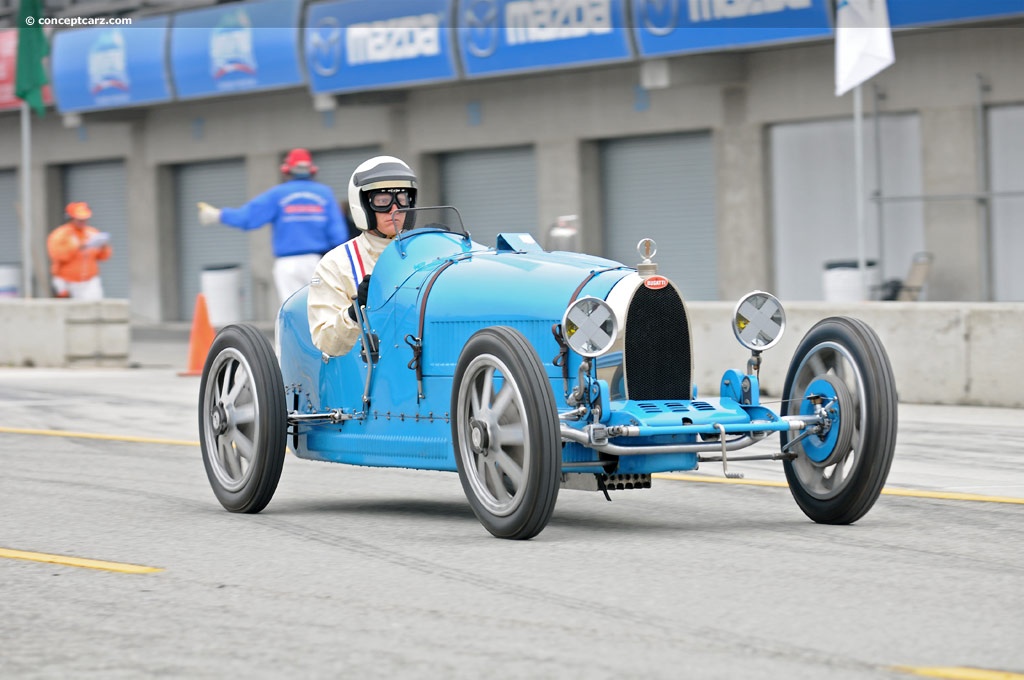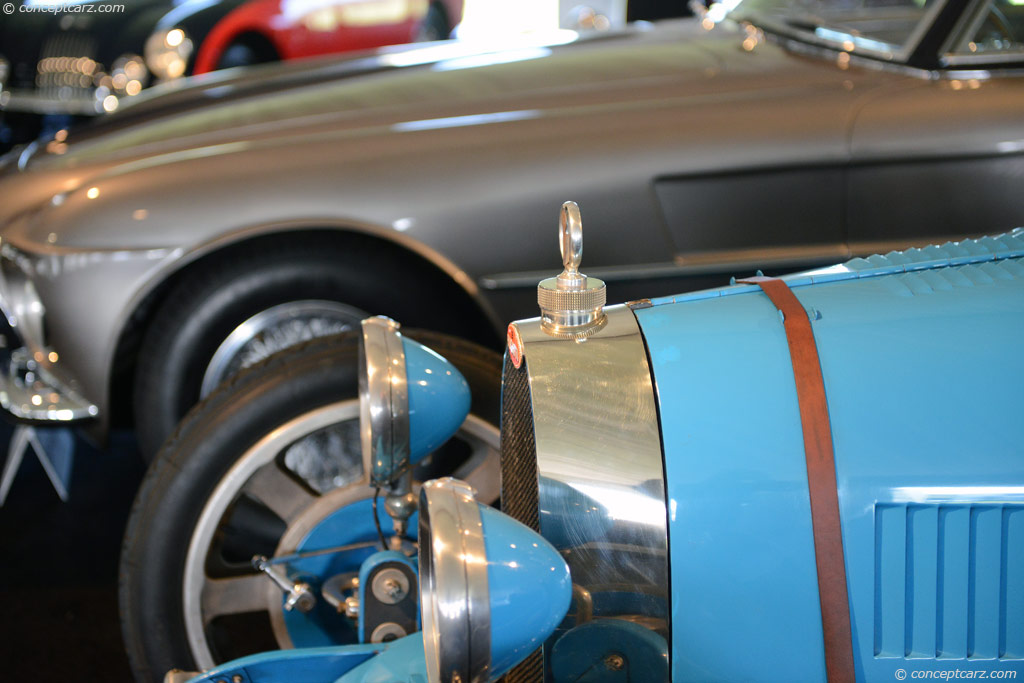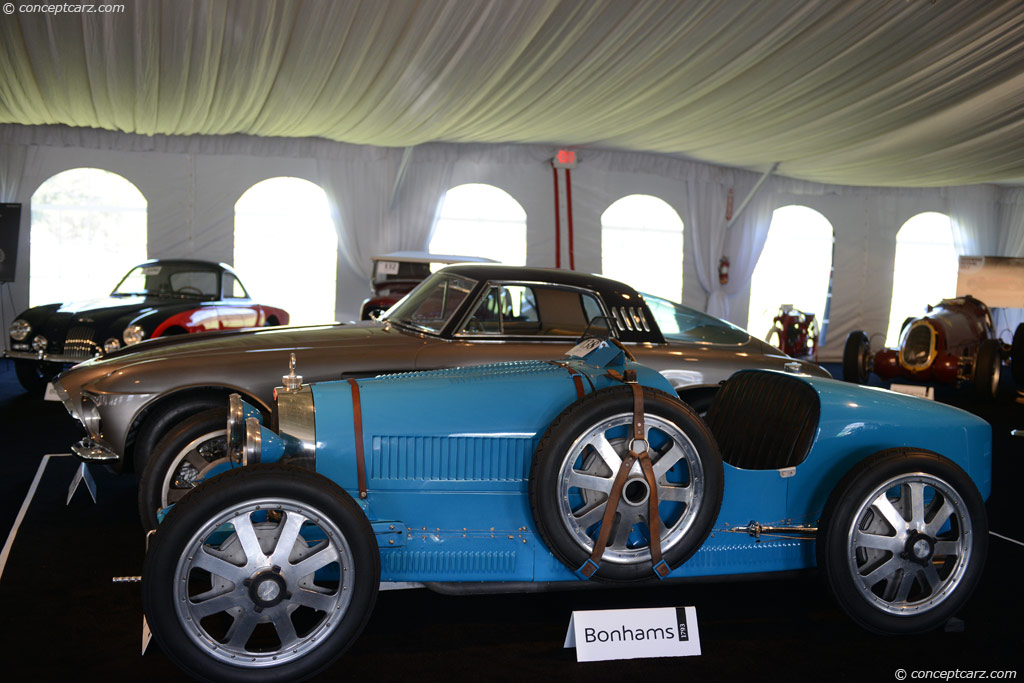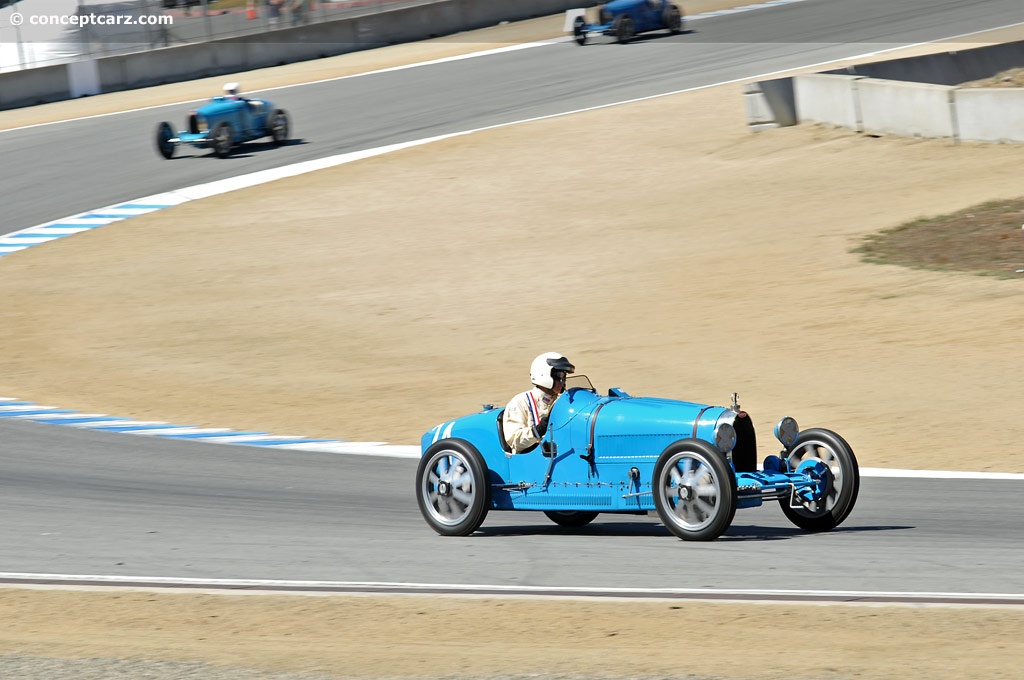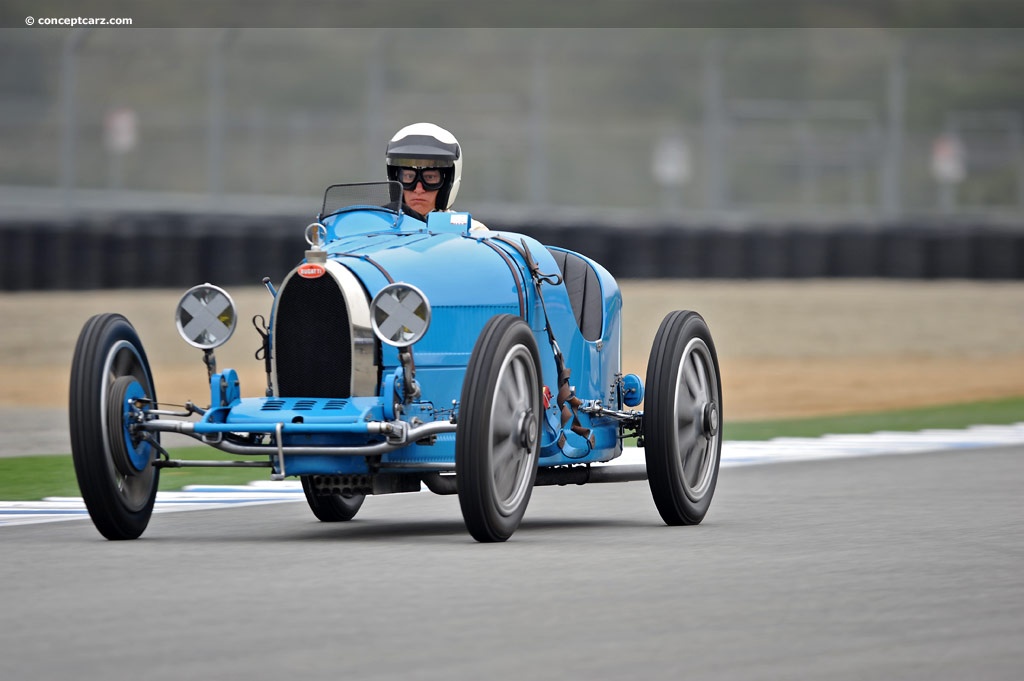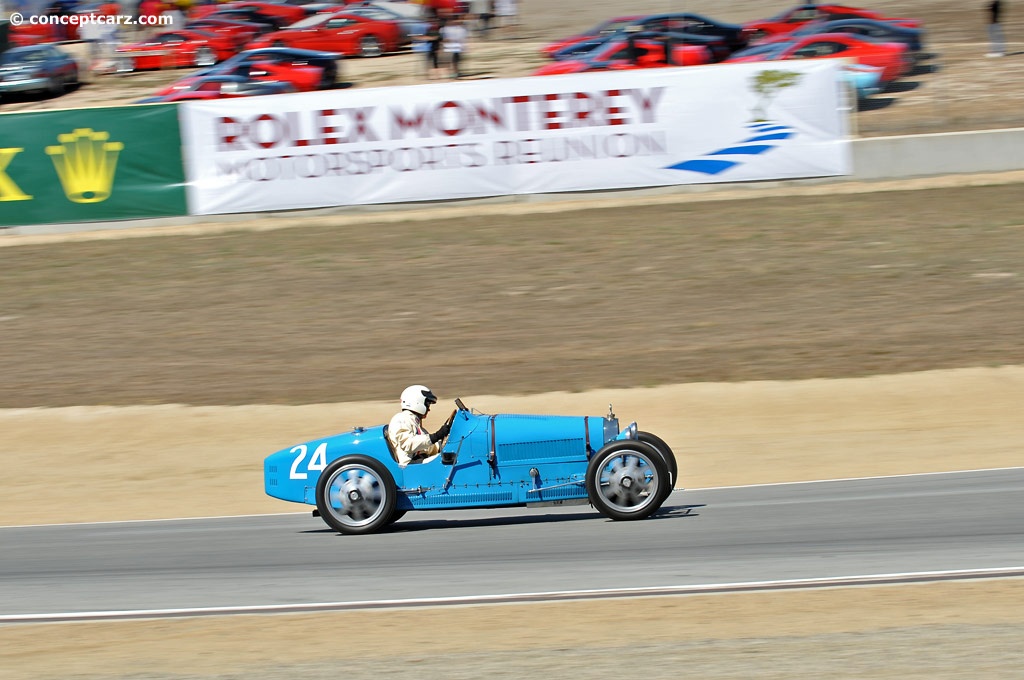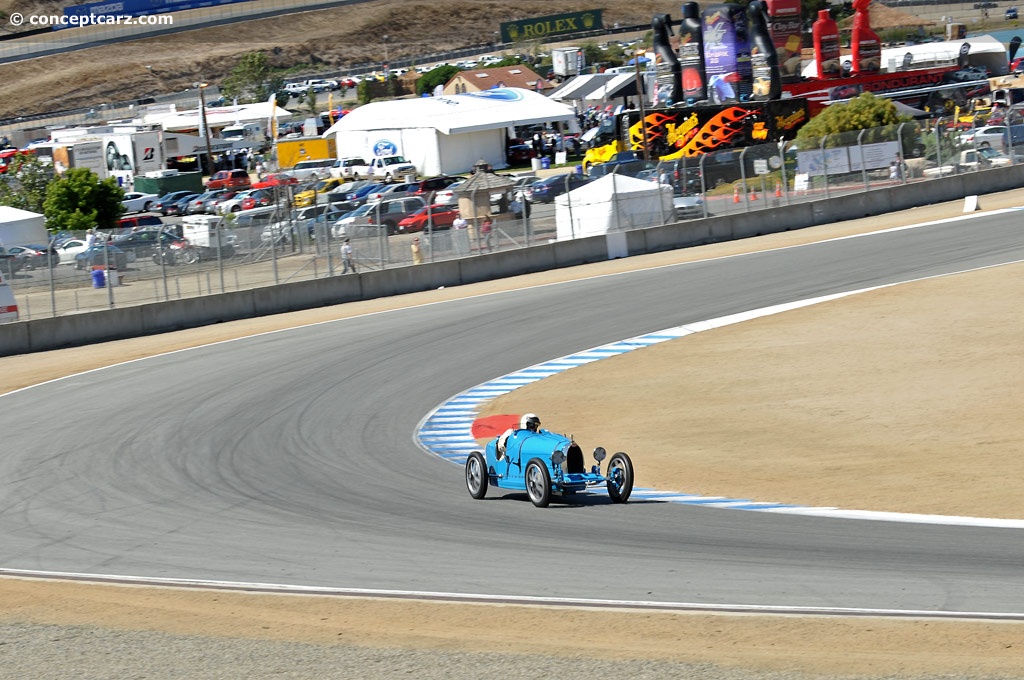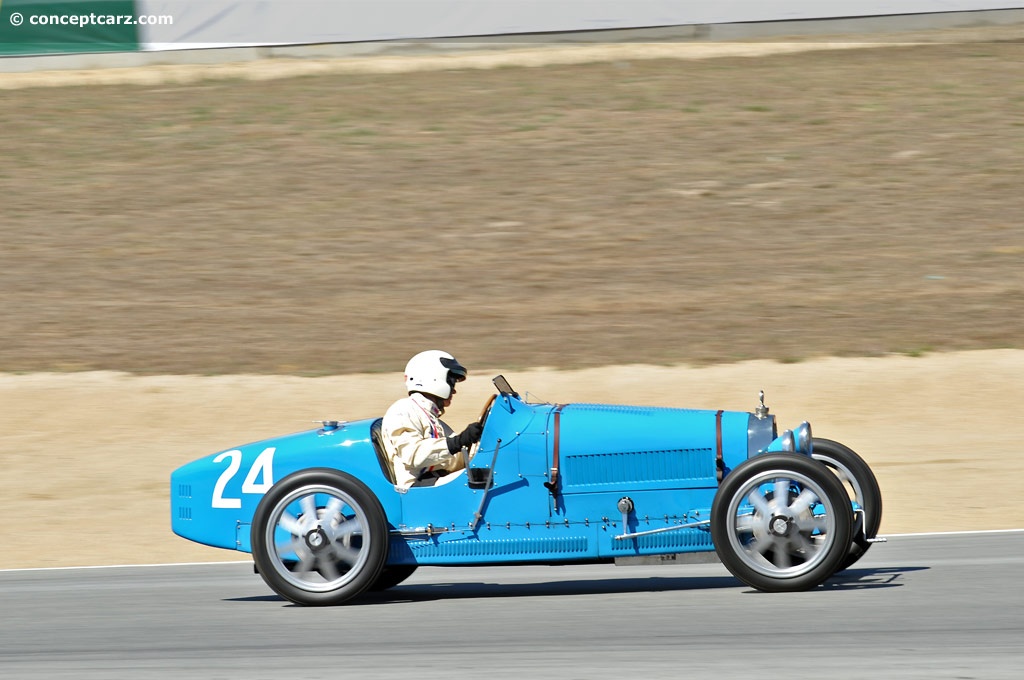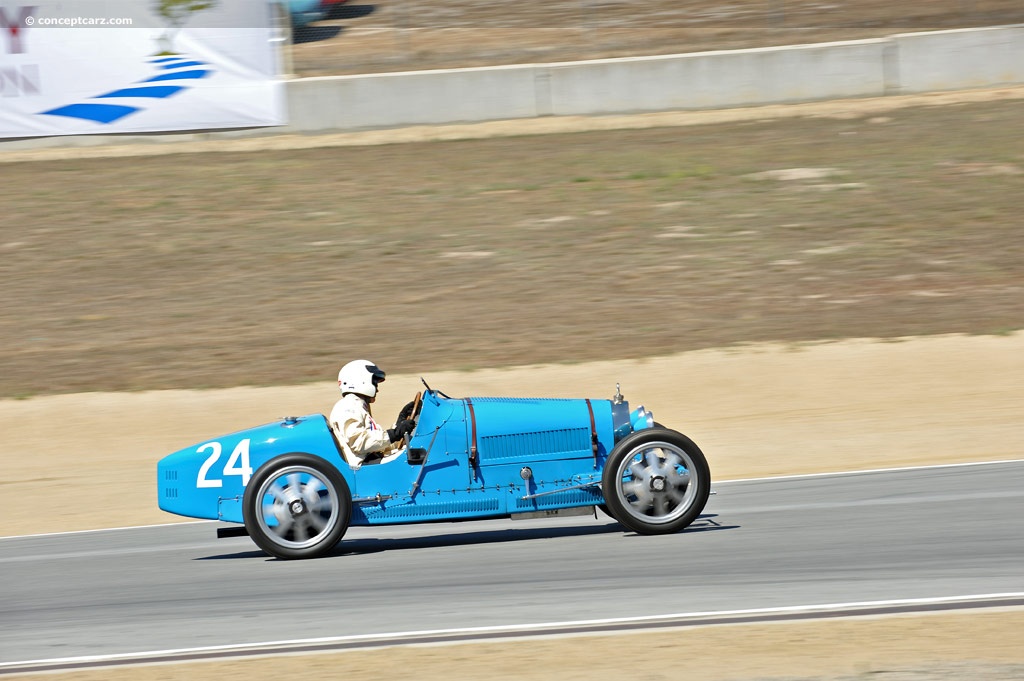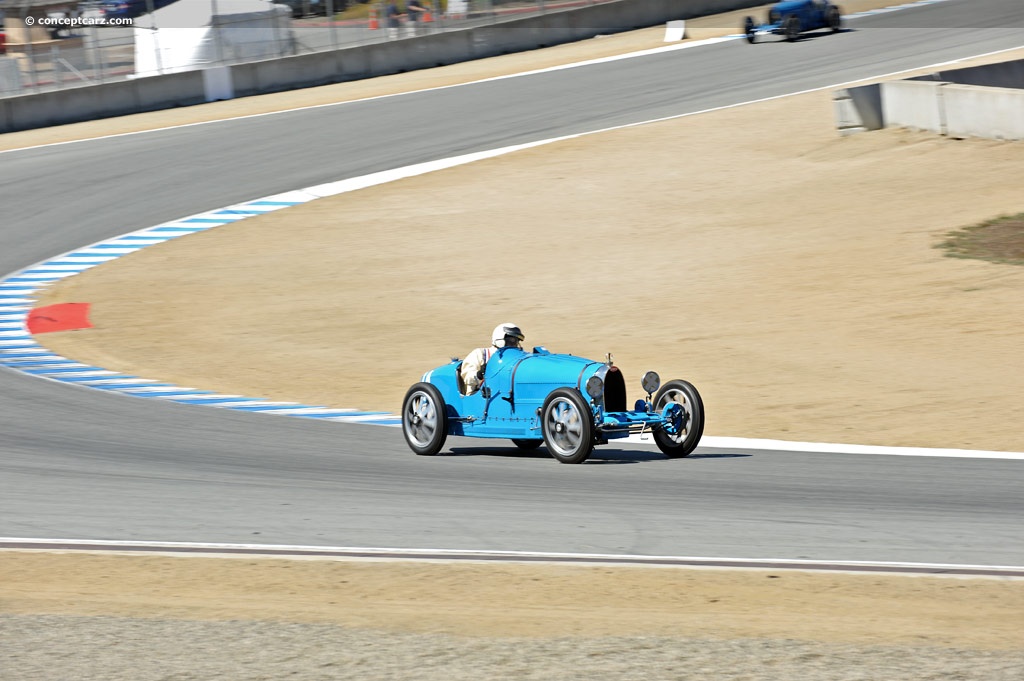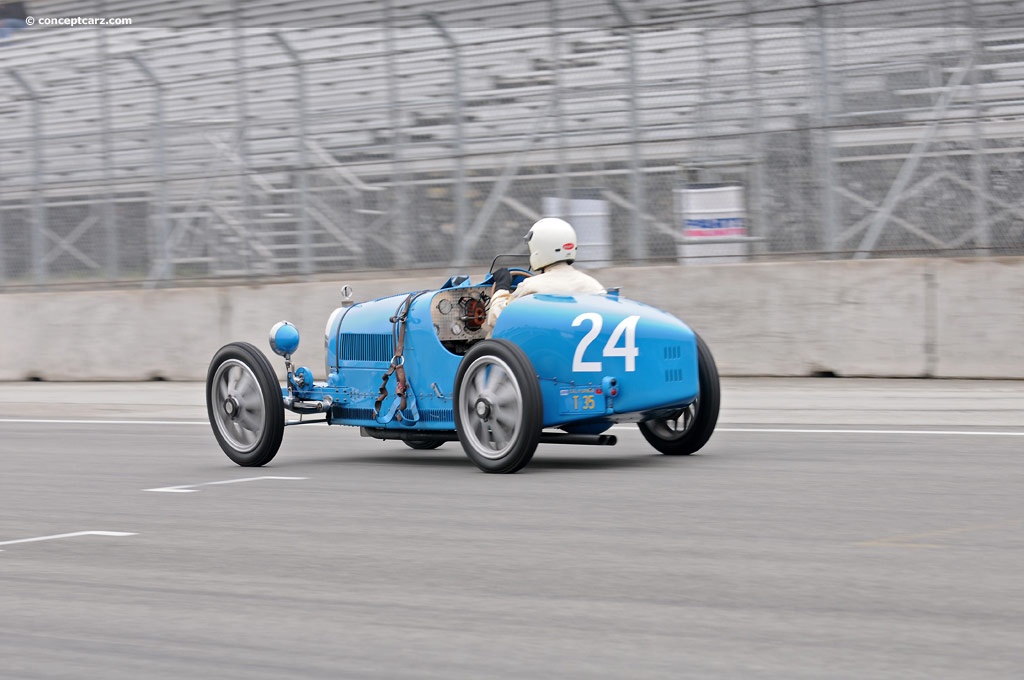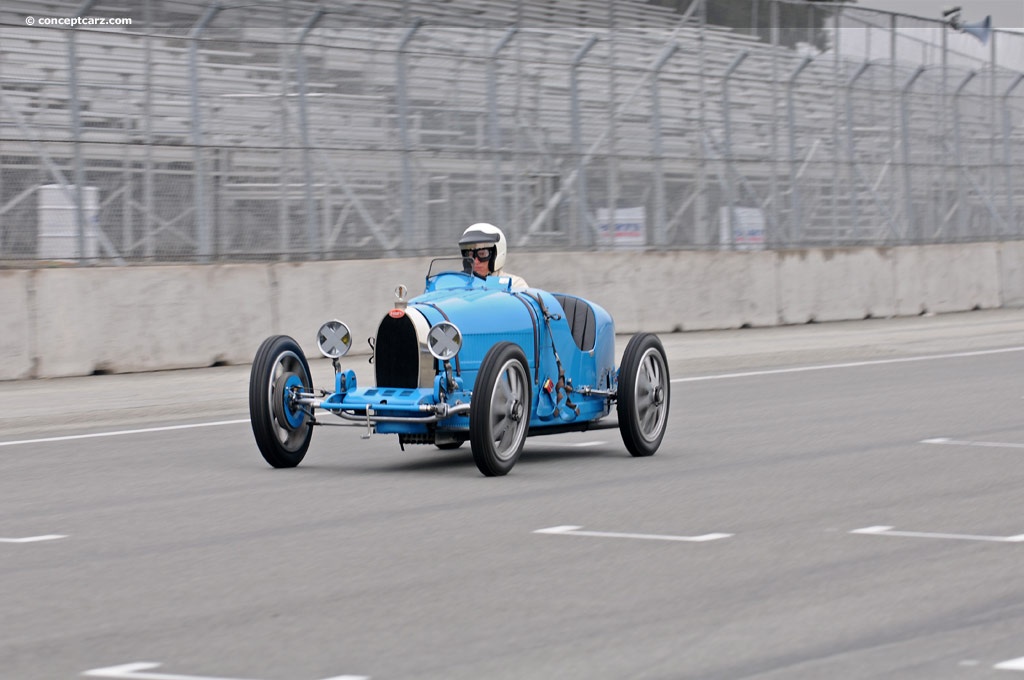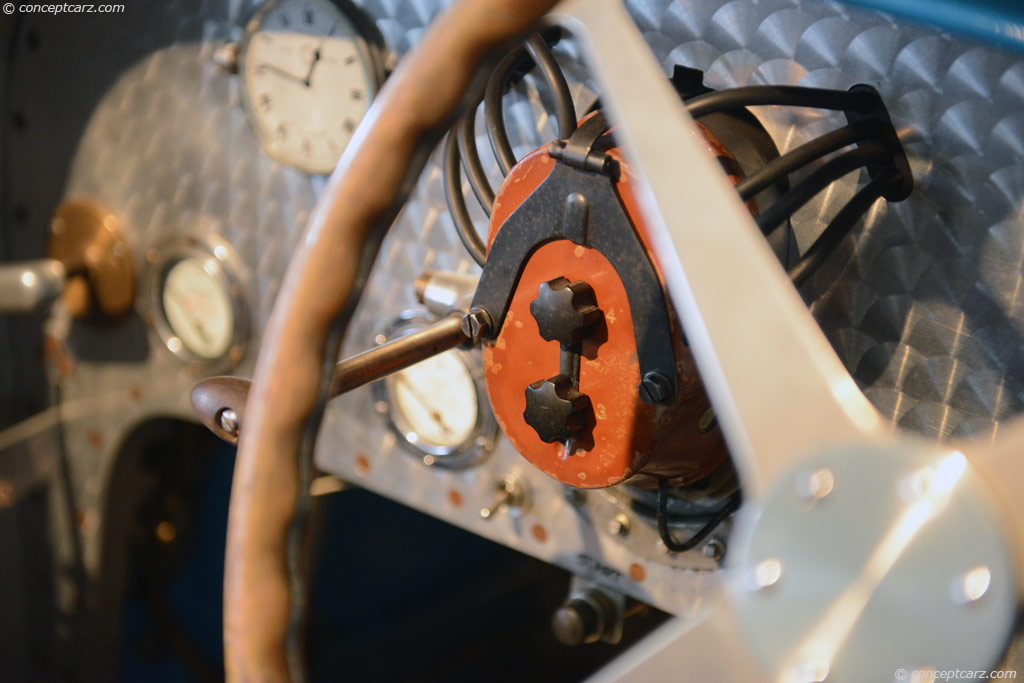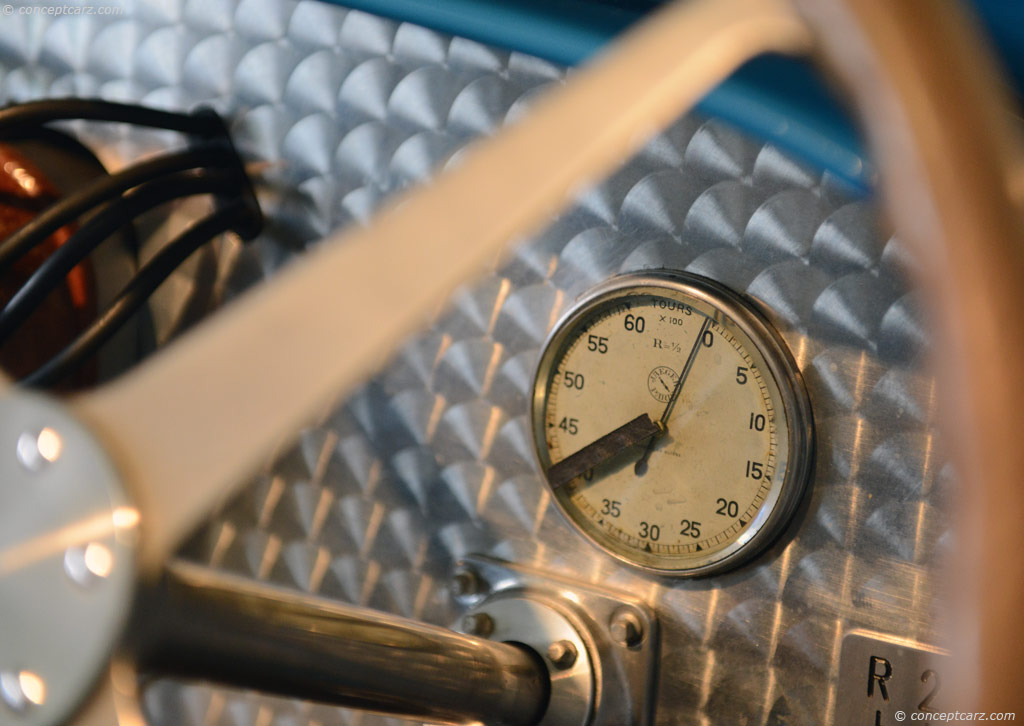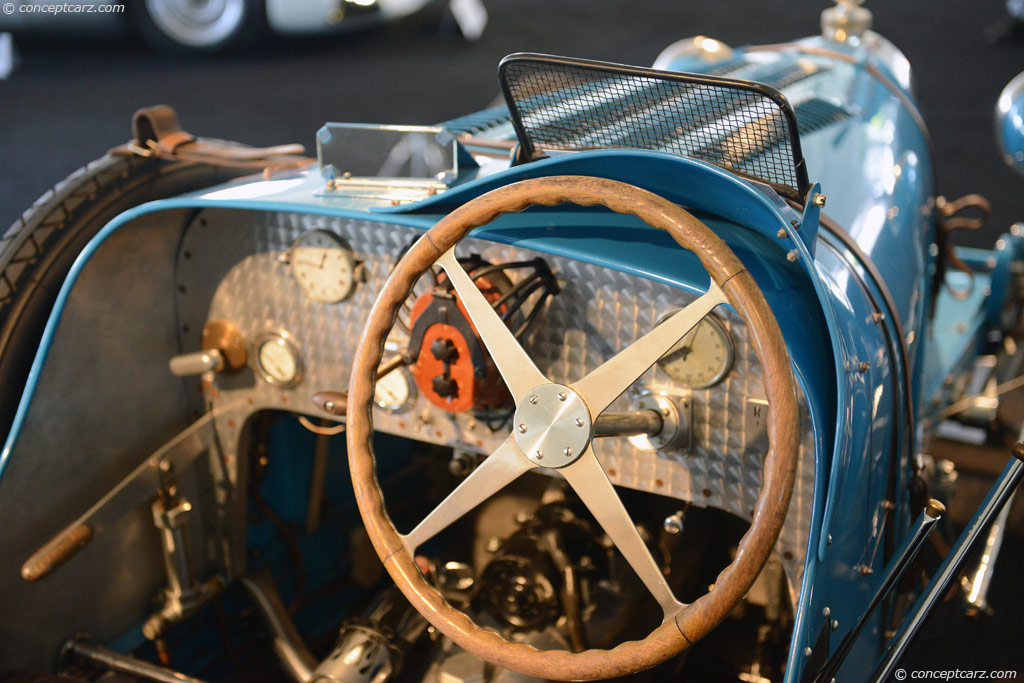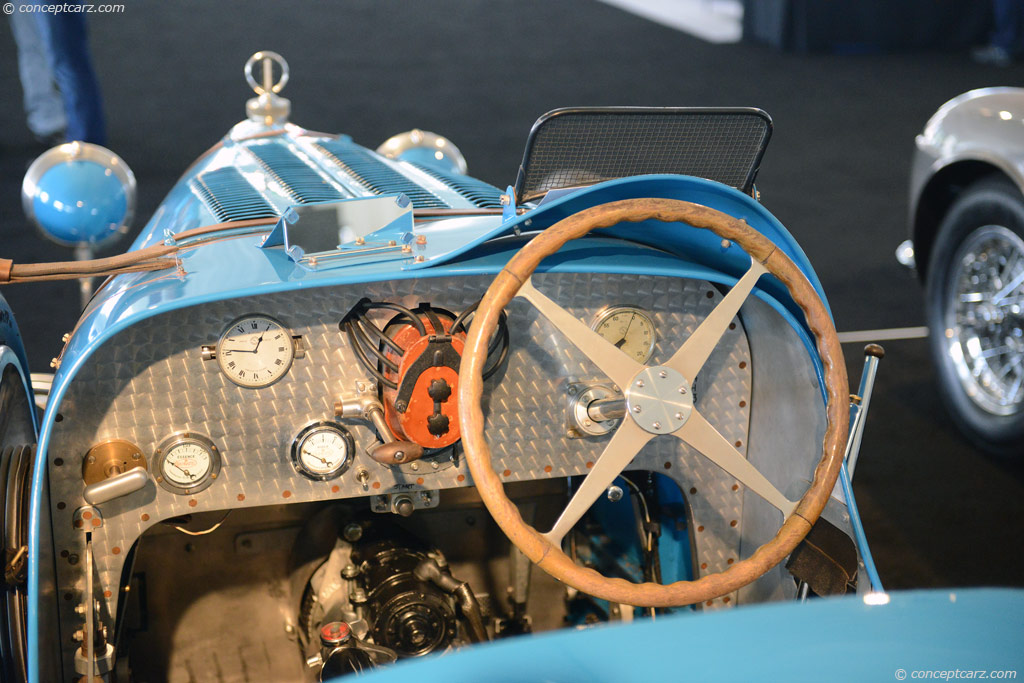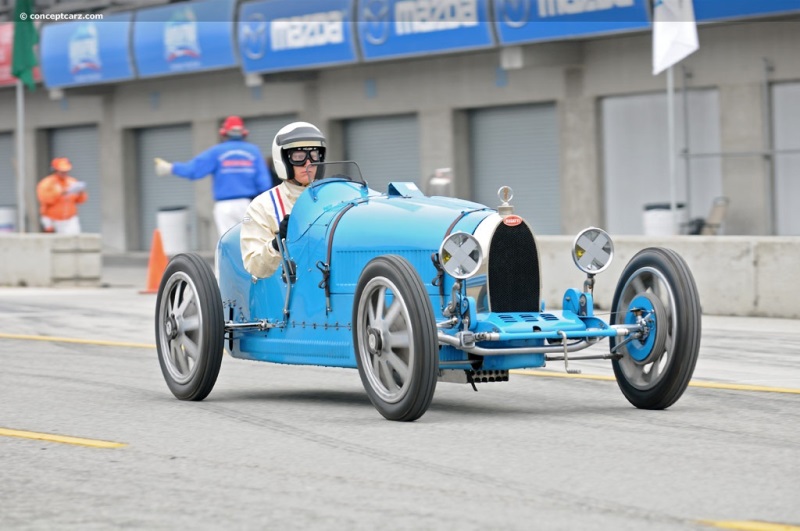Image credit: © conceptcarz.com (Reproduction Or reuse prohibited).
A true supercar is one that offers the comforts expected for the road combined with the kind of performance needed for the track. Ettore Bugatti, however, demanded one other element from each of his designs—elegance.
Many automakers could design elegant automobiles, but Ettore would be the first to take his elegant designs and make them at home on the street or on the track. The vehicle that would introduce a number of affluent sons and daughters to the world of high speed would be his Type 35.
Bugatti had been producing different models of automobiles using 4-cylinder engines. He would have a good deal of success and this would lead to investing in a new car that could take on the very best the world had to offer.
Ettore understood elegantly-designed automobiles but the science of aerodynamics was still rather new and practically unheard of in the 1920s. Still, Ettore was on the forefront of design and understood at least some of the basics of airflow and how that should translate into design.
Ettore's response to this fledgling science would be the Type 32 'Tank'. This radical box-like design would be intriguing from a number of different angles but it had its problems, not the least of which included poor handling. Although the design would prove to be ill-timed and not very practical, especially as a race car, Bugatti would still learn from the experience and would apply much of the knowledge learned from that experience to his next design, which would be anything but ill-timed and unsuccessful.
The Type 32 would be a big box-like design that boasted grand sweeping lines to provide great airflow over the top of the car. This was the right idea but the car's size hindered handling and made it most impractical. If Ettore could create a design that was much more compact and clean then he would achieve the aim of building a great handling car with good airflow properties and performance. He would also prove to achieve his other great aim—elegance.
The design of the new Type 35 would certainly depart from the box-like design of the Type 32. Instead, Ettore would succeed in building a small, tight chassis with bodywork that squeezed down to the iconic horseshoe-shaped radiator. The bodywork trailing back from the nose widened to reveal a two-seat cockpit.
The real breakthrough with the Type 35 would come with its chassis. Though based upon the Brescia, one of his earlier models, Bugatti would take and have the front axle of the car lightened by drilling out the middle of the axle and then bending it slightly into a dropped position. The wheels would make use of aluminum spokes instead of the usual steel wire wheels. About the only throwback on the new Type 35 would be the cable-operated drum brakes.
When mated with the precision-crafted body the Type 35 fit together perfectly and achieved Ettore's great aim of building a great car for the road and the track while also being elegantly beautiful at the same time.
Bugatti would determine to enter a six-car team of the new Type 35s for the 1924 Grand Prix ACF held near Lyon. Out of the six cars entered, five would actually take part in the race. The sixth car would be held in reserve and would be used by Ettore himself for his personal transportation. The chassis used by Bugatti and that would be held in reserve for that race in Lyon would be chassis 4323.
Chassis 4323 would not only be one of the first six to be produced but it also features some interesting construction elements that would not be present in future examples of the Type 35. In fact, it would appear that the side rails on the chassis would actually be directly from the Type 23. In addition, the position of the front brake cable hole and magneto, as well as, the lack of a one piece axle housing are all indicative of one of the Lyon Type 35s.
Following the race in Lyon, 4323 would be sent to London Bugatti agents Jarrott & Letts and would be then placed on display at the 1925 Olympia Auto Show. While the car stood on display at the show, the car had already been sold to Sir Robert Bland Bird.
After passing through Bird's hands to Colonel Godfrey Giles in March of 1928, the car ended up being sold to John Houldsworth. Houldsworth would have an idea in mind for the Type 35. He would enter the car in the BRDC British Empire Trophy race at Brooklands in 1934. Unfortunately, this decision would prove tragic as John would crash the Bugatti during the race and would end up perishing as a result of the injuries sustained in the crash.
Left battered and broken, 4323 would have no owner and no future. However, Arthur Baron would purchase the car. Baron would purchase the car without its 2.0-liter straight 8-cylinder engine. Instead, he would place a supercharged engine from a Brescia into the chassis and would continue to compete in a number of different events, including the 1939 Prescott hillclimb.
Purchased by Bob Foster in 1947, the Type 35 would take part in a number of hillclimbs and would be greatly altered from its original form. When sold again, this time to Del Lee, the car remained in its altered form and would continue to take part in events, this time in the United States. After a while, the car would be passed on to Jack Manting. But his enjoyment of the car would be brief as he would pass away.
Then, in 1966, Mr. Henry 'Hank' Haga would come to own the Bugatti. Haga had become aware of the Bugatti via his neighbor Dick Teague. Haga had been working for Cadillac as the head of design when he came to own the Bugatti. Haga would set about restoring.
The car, which now had an MG TF engine, and a number of parts, would be shipped to Germany where the restoration would take place. When completed, the Bugatti picked up right where it left off as Mr. Haga would take part in a number of historic races with the car. The car would also achieve a Best in Class at the 1983 Pebble Beach Concours d'Elegance. Mr. Haga and his wife would also take the car back to Lyon, France in 1994 for the 70th anniversary of the Type 35's first race, the very event 4323 had been at when brand new.
Chassis 4323 had continued to be a regular in a number of races and grand touring events. Events like the Copperstate 1000 and the Bugatti Rally and race at Elkhart Lake have all been events in which 4323 has taken part. And, perhaps most importantly, it continues to testify to Ettore's commitment to excellence and quality as it continues to run and run and never fails to turn heads anywhere it goes.
A truly legendary example of the Type 35, chassis 4323 would be offered for sale at the 2013 Bonhams Quail Lodge auction. Far and above 1,000 victories would be earned by the Type 35 over the course of its racing career, but this particular example is one of just six that stands head and shoulders above them all. This would be why estimates prior to the auction would have the 1924 Bugatti Type 35, chassis 4323, earning potentially between $1,500,000 and $2,500,000.
Sources:
'Lot No. 138: 1924 Bugatti Type 35 Grand Prix', (http://www.bonhams.com/auctions/20994/lot/138/?page_anchor=r1%3D199%26m1%3D1). Bonhams. http://www.bonhams.com/auctions/20994/lot/138/?page_anchor=r1%3D199%26m1%3D1. Retrieved 12 August 2013.
'Type 32 'Tank'', (http://www.bugatti.com/en/tradition/bugatti-models/t32.html). Bugatti. http://www.bugatti.com/en/tradition/bugatti-models/t32.html. Retrieved 12 August 2013.
By Jeremy McMullen
Many automakers could design elegant automobiles, but Ettore would be the first to take his elegant designs and make them at home on the street or on the track. The vehicle that would introduce a number of affluent sons and daughters to the world of high speed would be his Type 35.
Bugatti had been producing different models of automobiles using 4-cylinder engines. He would have a good deal of success and this would lead to investing in a new car that could take on the very best the world had to offer.
Ettore understood elegantly-designed automobiles but the science of aerodynamics was still rather new and practically unheard of in the 1920s. Still, Ettore was on the forefront of design and understood at least some of the basics of airflow and how that should translate into design.
Ettore's response to this fledgling science would be the Type 32 'Tank'. This radical box-like design would be intriguing from a number of different angles but it had its problems, not the least of which included poor handling. Although the design would prove to be ill-timed and not very practical, especially as a race car, Bugatti would still learn from the experience and would apply much of the knowledge learned from that experience to his next design, which would be anything but ill-timed and unsuccessful.
The Type 32 would be a big box-like design that boasted grand sweeping lines to provide great airflow over the top of the car. This was the right idea but the car's size hindered handling and made it most impractical. If Ettore could create a design that was much more compact and clean then he would achieve the aim of building a great handling car with good airflow properties and performance. He would also prove to achieve his other great aim—elegance.
The design of the new Type 35 would certainly depart from the box-like design of the Type 32. Instead, Ettore would succeed in building a small, tight chassis with bodywork that squeezed down to the iconic horseshoe-shaped radiator. The bodywork trailing back from the nose widened to reveal a two-seat cockpit.
The real breakthrough with the Type 35 would come with its chassis. Though based upon the Brescia, one of his earlier models, Bugatti would take and have the front axle of the car lightened by drilling out the middle of the axle and then bending it slightly into a dropped position. The wheels would make use of aluminum spokes instead of the usual steel wire wheels. About the only throwback on the new Type 35 would be the cable-operated drum brakes.
When mated with the precision-crafted body the Type 35 fit together perfectly and achieved Ettore's great aim of building a great car for the road and the track while also being elegantly beautiful at the same time.
Bugatti would determine to enter a six-car team of the new Type 35s for the 1924 Grand Prix ACF held near Lyon. Out of the six cars entered, five would actually take part in the race. The sixth car would be held in reserve and would be used by Ettore himself for his personal transportation. The chassis used by Bugatti and that would be held in reserve for that race in Lyon would be chassis 4323.
Chassis 4323 would not only be one of the first six to be produced but it also features some interesting construction elements that would not be present in future examples of the Type 35. In fact, it would appear that the side rails on the chassis would actually be directly from the Type 23. In addition, the position of the front brake cable hole and magneto, as well as, the lack of a one piece axle housing are all indicative of one of the Lyon Type 35s.
Following the race in Lyon, 4323 would be sent to London Bugatti agents Jarrott & Letts and would be then placed on display at the 1925 Olympia Auto Show. While the car stood on display at the show, the car had already been sold to Sir Robert Bland Bird.
After passing through Bird's hands to Colonel Godfrey Giles in March of 1928, the car ended up being sold to John Houldsworth. Houldsworth would have an idea in mind for the Type 35. He would enter the car in the BRDC British Empire Trophy race at Brooklands in 1934. Unfortunately, this decision would prove tragic as John would crash the Bugatti during the race and would end up perishing as a result of the injuries sustained in the crash.
Left battered and broken, 4323 would have no owner and no future. However, Arthur Baron would purchase the car. Baron would purchase the car without its 2.0-liter straight 8-cylinder engine. Instead, he would place a supercharged engine from a Brescia into the chassis and would continue to compete in a number of different events, including the 1939 Prescott hillclimb.
Purchased by Bob Foster in 1947, the Type 35 would take part in a number of hillclimbs and would be greatly altered from its original form. When sold again, this time to Del Lee, the car remained in its altered form and would continue to take part in events, this time in the United States. After a while, the car would be passed on to Jack Manting. But his enjoyment of the car would be brief as he would pass away.
Then, in 1966, Mr. Henry 'Hank' Haga would come to own the Bugatti. Haga had become aware of the Bugatti via his neighbor Dick Teague. Haga had been working for Cadillac as the head of design when he came to own the Bugatti. Haga would set about restoring.
The car, which now had an MG TF engine, and a number of parts, would be shipped to Germany where the restoration would take place. When completed, the Bugatti picked up right where it left off as Mr. Haga would take part in a number of historic races with the car. The car would also achieve a Best in Class at the 1983 Pebble Beach Concours d'Elegance. Mr. Haga and his wife would also take the car back to Lyon, France in 1994 for the 70th anniversary of the Type 35's first race, the very event 4323 had been at when brand new.
Chassis 4323 had continued to be a regular in a number of races and grand touring events. Events like the Copperstate 1000 and the Bugatti Rally and race at Elkhart Lake have all been events in which 4323 has taken part. And, perhaps most importantly, it continues to testify to Ettore's commitment to excellence and quality as it continues to run and run and never fails to turn heads anywhere it goes.
A truly legendary example of the Type 35, chassis 4323 would be offered for sale at the 2013 Bonhams Quail Lodge auction. Far and above 1,000 victories would be earned by the Type 35 over the course of its racing career, but this particular example is one of just six that stands head and shoulders above them all. This would be why estimates prior to the auction would have the 1924 Bugatti Type 35, chassis 4323, earning potentially between $1,500,000 and $2,500,000.
Sources:
'Lot No. 138: 1924 Bugatti Type 35 Grand Prix', (http://www.bonhams.com/auctions/20994/lot/138/?page_anchor=r1%3D199%26m1%3D1). Bonhams. http://www.bonhams.com/auctions/20994/lot/138/?page_anchor=r1%3D199%26m1%3D1. Retrieved 12 August 2013.
'Type 32 'Tank'', (http://www.bugatti.com/en/tradition/bugatti-models/t32.html). Bugatti. http://www.bugatti.com/en/tradition/bugatti-models/t32.html. Retrieved 12 August 2013.
By Jeremy McMullen
2013 Bonhams - Quail Lodge Auction
Pre-Auction Estimates :
USD $1,500,000-USD $25,000,000
Lot was not sold
Recent Sales of the Bugatti Type 35
(Data based on Model Year 1924 sales)
Bugatti Type 35s That Failed To Sell At Auction
1924 Bugatti Type 35's that have appeared at auction but did not sell.
| Vehicle | Chassis | Event | High Bid | Est. Low | Est. High |
|---|---|---|---|---|---|
| 1924 Bugatti Type 35 Grand Prix | 4323 | 2013 Bonhams Quail Lodge Auction | $1,500,000 | $25,000,000 |
Vehicles With Comparable Market Values
Similar sales to the range.
1924 Bugatti Type 35
• Additional valuation insight and sales data• History
• Specifications
• Image gallery
• Other Bugatti Type 35 model years
